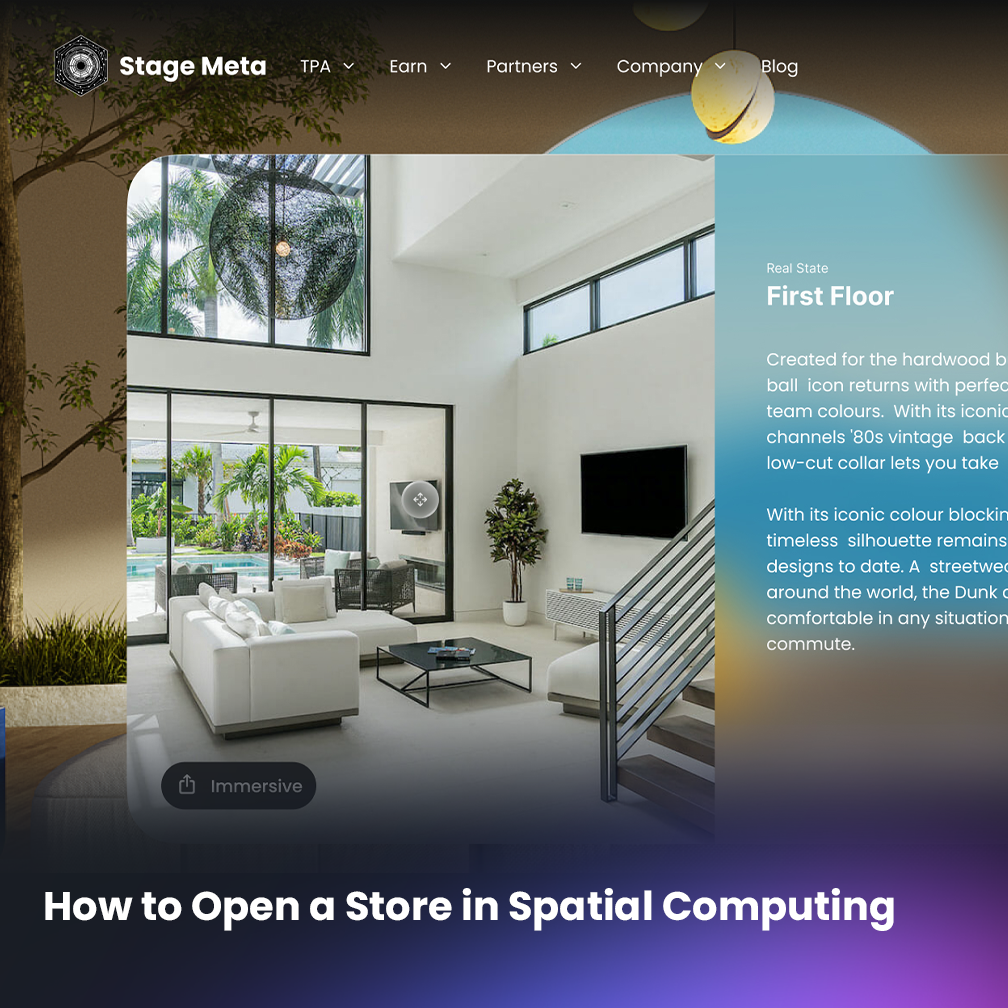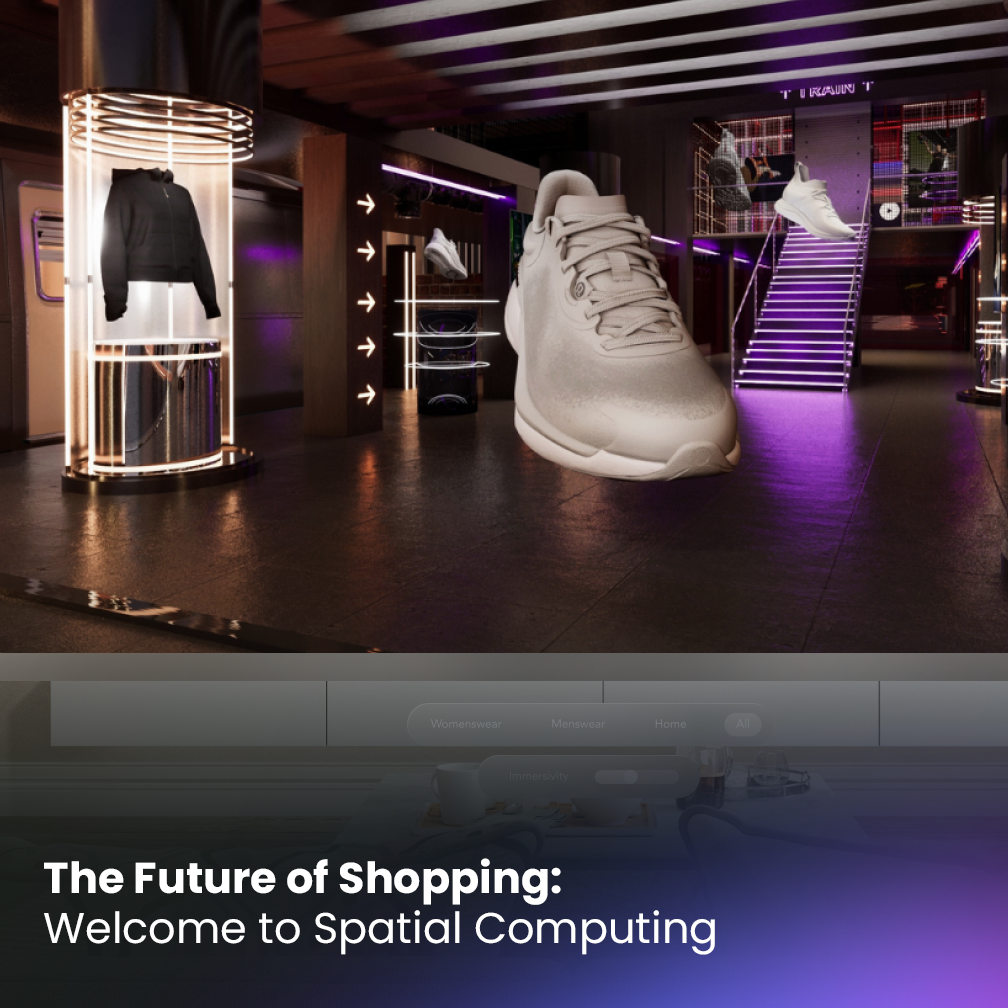
Estimated reading time: 7 minutes
An exciting new era in technology has just begun and businesses are rushing to become a part of this revolution. Many companies are now thinking of ways to open a store in spatial computing.
You might have a number of questions in your mind about setting up a store in spatial computing. Is it going to be difficult? Does it need special hardware such as VR headsets? Is it costly and time-consuming? Well, we are going to answer all these questions in this article, but to give you a preview, opening a store in spatial computing is easier than you might imagine!
Now let’s dive into how you can set up your store in spatial computing.
What is Spatial Computing?
Before we jump into all the details about starting your retail business in spatial computing, let’s take a look at the nature and concept of spatial computing for the ones who might be new to it.

The immersive nature of spatial computing makes it the next big advancement in online shopping. It means instead of scrolling through online shopping websites and viewing 2D photos of the products, spatial computing allows customers to be present in the store and even try out the items in virtual reality.
With the help of virtual and augmented reality, customers can have an immersive experience while buying physical or digital goods from the comfort of their homes.
Spatial computing has already been used widely for video games and business meetings. But retail stores are also getting creative in using the full potential of spatial computing.
Why Open a Store in Spatial Computing?
Spatial computing is rapidly evolving, and although its future might be indefinite, we can say that this immersive technology is here to stay.
With the rise of e-commerce, many buyers switched to the Internet to buy goods instead of visiting physical stores in person. There are around 2.14 billion digital buyers worldwide.
In the past, the e-commerce space consisted of 2D interfaces such as websites and applications with prices, static images, and product listings.
Spatial computing aims to take the online shopping experience further by creating an immersive 3D virtual space for businesses to engage with their customers even more effectively than before.
If you want to understand the full potential of spatial computing and why you should open a store in spatial computing, we can look at some real-world examples. Big brands such as Gucci and Nike have already developed their spatial computing businesses where customers can enter spatial computing and make purchases for real-life or digital items. According to Nike, nearly 7 million people have visited Nikeland so far, thus showing the potential of irtual space.
Benefits of Setting Up a Virtual Store in Spatial Computing

Nowadays, everything is shifting online, and it might be time for businesses to revise their business models. It is estimated that a large number of businesses will be present in spatial computing in the near future. That is why organizations must not ignore the opportunities that virtual space has to offer.
Here are some of the benefits of opening a store in spatial computing:
Enhanced and Personalized Customer Connections
What online shopping lacks when compared to in-store shopping is the human connection that customers experience in a physical store. Online stores are deprived of human interactions, but virtual stores in spatial computing can change the game.
In a virtual store, customers can use their avatars to start a conversation with the salesperson. This feature can improve customer experience to a premium level and bring about customer satisfaction.
Improved Store Performance and Quality of Service
Spatial computing is the realm of borderless connectivity. Most of the limitations of the physical world do not exist in the virtual world. So, business owners can open a store in spatial computing that is exactly to their liking.
By setting up shop in spatial computing, customers who aren’t able to come into your store can still browse your products and shop with ease. There would also be no need to stand in line or look for an empty fitting room.
In addition, business owners can benefit from the tools at their disposal to manage their employees more efficiently. Brands can measure employee performance and provide helpful feedback when necessary. By doing this, they can improve overall processes and boost employee engagement.
Higher Customer Retention
Personalized assistance, limitless customer support, and the ability to have an immersive experience with the products can encourage customers to choose your brand over your competitors.
The store you set up in spatial computing can be as extravagant as you wish since many physical strains, such as limited space and budget, would be meaningless in spatial computing. So, you can get creative and use methods to improve customer retention.
How to Open a Store in Spatial Computing?

Now that we have become familiar with the benefit of shifting to the virtual world let’s take a look at the steps you need to take to launch your virtual store in spatial computing.
Step 1: Create your Customer Persona
The very first step you need to take, which is not very different from what you’d do in the real world, is to identify and get to know the customers you are trying to connect with.
You need to consider elements such as demographics, interests, spending habits, preferences, etc. to fully understand your customer and be about to create content that is engaging enough for them. For example, if your customers are teenagers interested in video games, you might want to create a game-based experience in your virtual store.
Step 2: Choose the Right Spatial Computing Platform
To open a store in spatial computing, the next step is to get to know the virtual space and choose a spatial computing platform that is suitable for your business.
Right now, there are a number of great spatial computing platforms out there, and as each of them is designed for a specific purpose, you need to choose the one that fits your goals perfectly.
For example, Decentraland, Roblox, and Meta’s Horizon Worlds are only a few platforms out there that you can consider.
Also, if you are looking for a spatial computing platform especially aimed at businesses, you can choose to create your virtual presence on Stage Meta. This platform was created with online retail and other business uses in mind.
The key highlights of the Stage Spatial Computing platform include:
- Focus on creating and developing spatial computing for businesses.
- In-house development allows for better response to any partner requirements.
- Blockchain-based to maintain transparency in dealings.
- Various monetization options: marketing transactions with Plaques, and developing business into functional and immersive experiences, amongst others.
Step 3: Create and implement a 3D model of Your Store
The 3D design of your virtual store can go from a simple cartoon model, as seen in the Roblox Platform, to Unreal Engine game-level graphical avatars. You can decide the level of graphics required for your store.
In addition, you can hire 3D modeling experts to create a personalized 3D model of your virtual store. While you are in the process of designing your store, you can simultaneously consider your marketing and promotion strategies.
After creating your 3D model, you must log in to spatial computing platform and go on to create your custom environment.
Step 4: Start Your Virtual Journey
Once you have successfully set up your store, accessibility will also be a major area you need to focus on. You also need to improve your online presence, as it can be a channel to drive customers to your virtual store.
Brands may also need to consider a virtual makeover to fit the tech and social demands of spatial computing. It would also make sense to develop collectible versions of your products to make them tradable in spatial computing.
And lastly, remember that spatial computing is all about experience. If you start creating an engaging space with a fun and immersive experience, your customers will want to interact.








